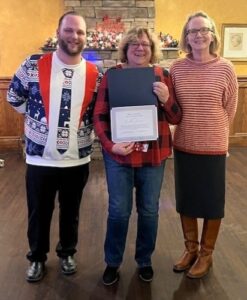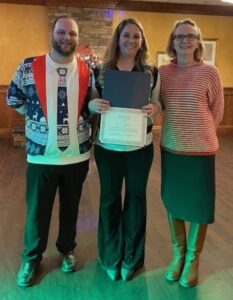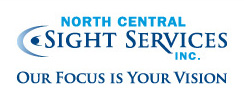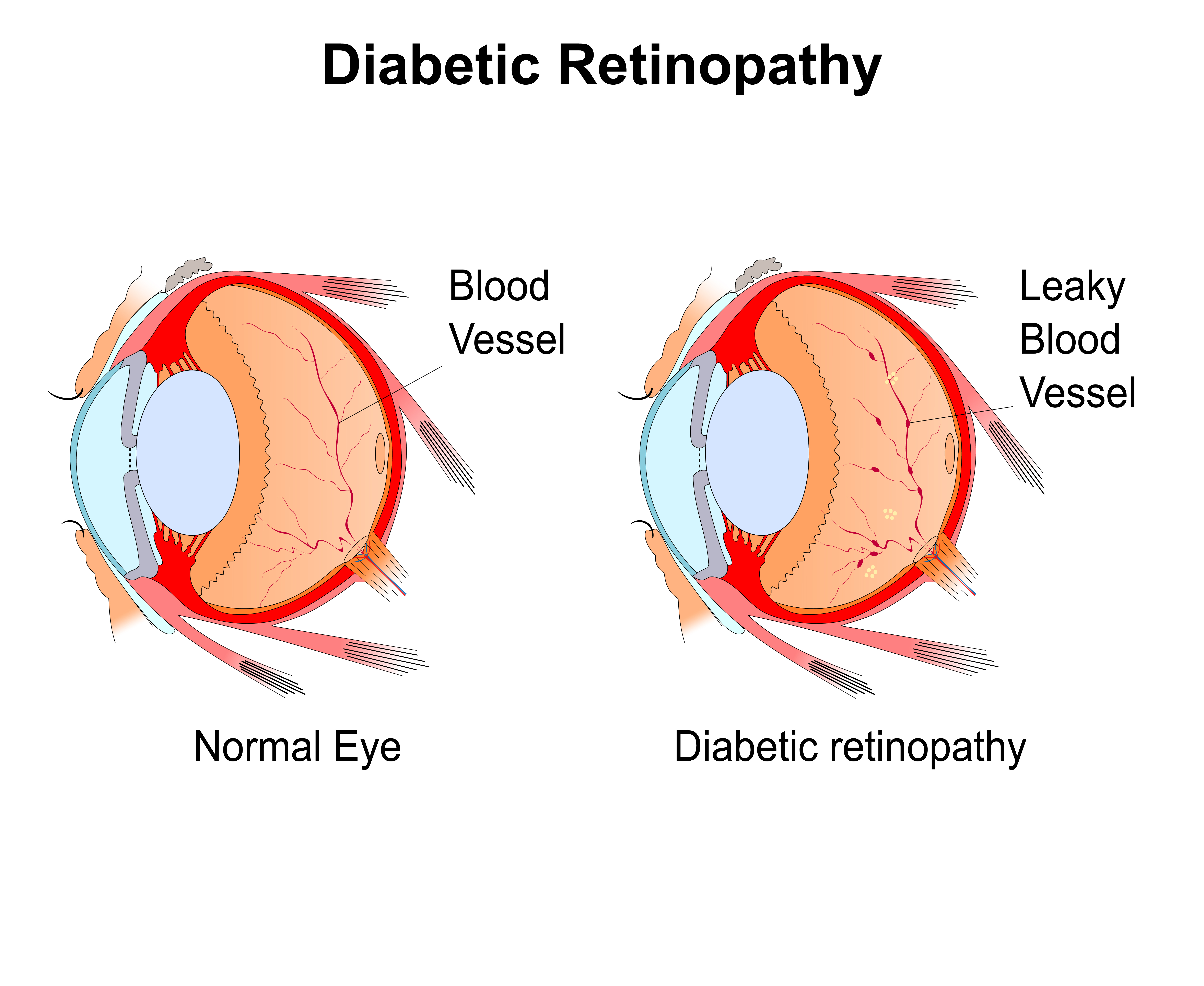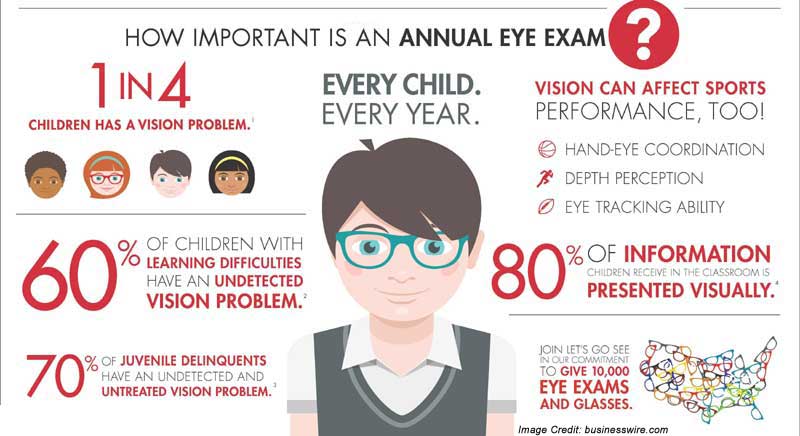At a recent employee holiday luncheon, several members were awarded for their hard work and dedication to North Central Sight Services. Join us in congratulating our awardees!
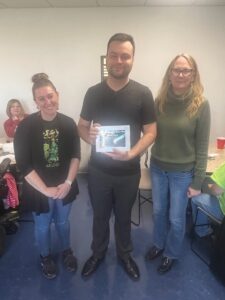
True North Employee of the Year Award: Steven Floyd
The True North Award is given to an employee who seizes opportunities to enhance our company culture by fostering positivity, learning about our various departments, programs, and services, contributing to training, participating in events, excelling under pressure, and making responsible decisions. Someone who lives our mission every day.
The recipient of the True North Employee of the Year Award is Steven Floyd. Steven embodies the core values of our company with his consistent positivity and dedication to our mission. Through participation in various QWE (Quality Work Environment) Teams, Steven has expanded his knowledge of not only our own departments and operations, but also those in different organizations as well, enhancing both his own processes and contributing significantly to the overall improvement of the agency. Steven’s commitment to continuous learning is matched only by his can-do attitude, and his evolving set of leadership skills. His kindness and willingness to assist his colleagues contributes immensely toward improving company culture, providing valuable insights into various fields outside of Assistive Technology alone. Steven’s involvement in events, AT training, and conferences, such as the PAB conference, showcases his dedication to both personal and professional growth. His commitment to fostering positivity and living our mission daily makes him a truly deserving recipient of this award.
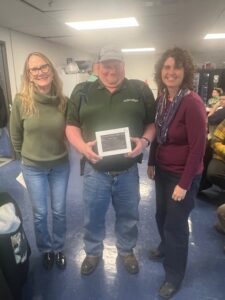
UniqueSource Employee of the Year Award: Paul Diehl
UniqueSource Employee of the Year Award recognizes visually impaired employees who have made a meaningful impact both on North Central Sight Services, Inc.’s and UniqueSource’s mission and values. The nominee contributes to UniqueSource products as well as other positive growth throughout the year.
Paul stands out as an exceptional employee who has significantly contributed to the missions and values of both NCSS and UniqueSource. Paul’s relentless commitment to enhancing his independence is evident in his use and training of advanced assistive technology. As a chair of a QWE team, he addressed accessibility challenges within the workplace, testing prototype devices, and striving to make all jobs more accessible. Paul’s active participation in various departments and his continuous search for more efficient job methods underscore his dedication to positive growth. A true team player, Paul advocates not only for himself but also for the visually impaired community, fostering a mindset that the only real limitations he has come from external forces rather than his own inherent capabilities. His contributions and commitment to improvement make him a deserving recipient of this award.
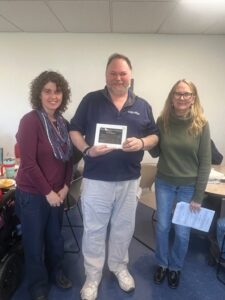
Peter J. Salmon Award: Nathan Shaffer
National Industries for the Blind Peter J. Salmon Employee of the Year Award honors individuals who are visually impaired and excel in direct labor manufacturing or service roles. Nominees are evaluated for the exceptional job performance and positive contribution at work and in their community, reflecting their dedication and impact in both their job and their community.
Nathan has consistently demonstrated exceptional job performance and positive contributions both within the workplace and the community. His desire to continuously develop is evident as he readily assists in various roles, from shipping, to inventory, to industry support, adapting seamlessly to changes in processes. Nathan’s commitment to self-improvement is notable, as he took the initiative to learn about and promote a program enhancing prescription accessibility, actively participating in fairs and events to spread awareness. Engaging in various teams, committees, and educational opportunities, Nathan showcases a positive attitude, punctuality, and a continuous pursuit of knowledge. His advocacy efforts for Script Talk, public speaking engagements, and ability to take on more responsibility whenever needed underscores Nathan’s dedication to both his peers and the visually impaired community, making him a deserving recipient of this award.
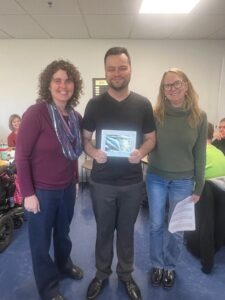
Milton J. Samuelson Career Achievement Award: Steven Floyd
National Industries for the Blind Milton J. Samuelson Career Achievement Award honors individuals who are visually impaired and have excelled in their employment goals this year. They’re recognized for their job performance, community involvement, and career development efforts like training and education. This award celebrates their dedication to inclusivity and independence.
Steven demonstrates an unwavering commitment to enhancing independence for the visually impaired community. His dedication is evident in pursuing multiple trainings and achieving a certification as an Assistive Technology Instructor. Steven helps mentor his colleagues, oversees the Assistive Technology department, and provides valuable skills and knowledge to the organization. Beyond the workplace, Steven operates a DJ service, actively engages in community events, and advocates for assistive technology at fairs and conferences. As a leader in the QWE Career Development team, he empowers individuals with tools and knowledge regardless of their abilities. Steven’s journey as a visually impaired, certified Assistive Technology Instructor exemplifies his resilience. Steven defies limitations and make a positive impact wherever he goes. These qualities and skills make him a deserving recipient of this award.
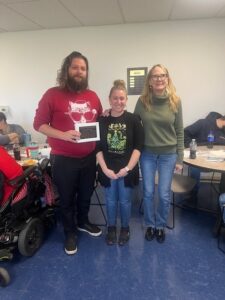
Harry Plankenhorn Honors Award: Noah Mantione
The Harry Plankenhorn Honors Award is a testament to the legacy of Harry Plankenhorn, a remarkable individual who dedicated his life to helping those in need. It recognizes an employee’s commitment to maintaining positivity, composure, and control over their tasks, actively seeking solutions, and advocating for the visually impaired community, just as Harry Plankenhorn did throughout his life.
Noah is a dedicated team player who consistently seeks to improve the impact of his work and tackles challenges with a resilient, mission forward mindset. He consistently provides reassurance, compassion, and understanding for everyone around him. Noah’s ability to think innovatively and actively seek solutions benefits not only his clients, but also his collogues, and the organization as a whole. Noah’s dedication to improving the lives of visually impaired individuals is evident as he regularly strives to go beyond helping clients navigate their necessities, actively promoting their independence and access to a fuller life of their own making. Noah is a true asset to the visually impaired community with his consistent engagement, thoughtful efforts, and commitment to outreach, making him truly deserving recipient of this award.

Vince Matteo Leadership Award: Brandy Moon
The Vince Matteo Leadership Award is a tribute to Dr. Vincent J. Matteo, an outstanding leader with a profound dedication to both professional excellence and community service. This award recognizes an employee who demonstrates strong leadership skills, enhances agency profitability and productivity, and who contributes to a positive work environment, embodying the exceptional leadership qualities exemplified by Dr. Matteo.
Brandy embodies the exceptional leadership qualities of Dr. Vince Matteo. This year, Brandy has made a remarkable impact on multiple departments, revitalizing them and steering them back on track. Demonstrating her commitment to continuous improvement, Brandy also attends various courses, focusing on finance in an effort to enhance her understanding of financial statements, budgets, and profitability. Brandy fosters a positive work environment through empathy, unbiased perspectives, encouragement, and emphasis on self improvement. her thoughtful approach extends to personal and professional development, seen in her enthusiasm for team projects and initiatives that elevate overall positivity among organization members. from actively listening to providing understanding and motivation, Brandy creates an inclusive environment for the whole organization. Her contributions to various departments showcase her dedication to success of the company. These skills and traits make Brandy an exceptional leader, truly deserving of the Vince Matteo Leadership Award.
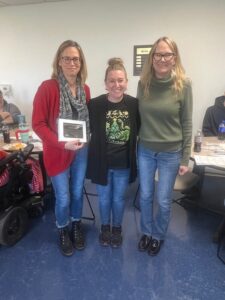
Steve Britton Memorial Award: Heather Engle
The Steve Britton Memorial Award recognizes an employee who follows in the footsteps of Steve Britton, displaying a deep commitment to community service, resilience in the face of challenges, and a strong spirit of giving. It honors someone who actively participates in community outreach programs and advocates for the visually impaired community, carrying our mission with them wherever they go, just as Steve did throughout his life.
Heather embodies both the spirit of community service and resilience through challenges. As a remarkable advocate for the visually impaired community, Heather engages in and teaches low vision and blindness awareness trainings, attends various events to help raise awareness, and provided vision screenings to hundreds of children throughout the year. Reflecting on her consistent positivity even in very tough situations, Heather’s support for both clients and colleagues, combined with her dedication to enhancing the lives of everyone she meets, demonstrates her commitment to our mission. Through her selfless acts of service, her education and etiquette training, and her vision screening programs, Heather has significantly contributed to the NCSS mission this year. Her warm demeanor, reliability, and the positive impact she makes everywhere she goes make Heather a deserving recipient of this award.
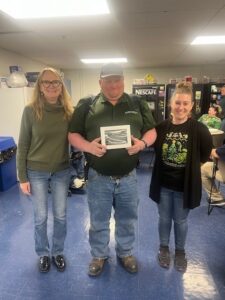
Rudy VanEmon Memorial Award: Paul Diehl and Donaven Scott-Mann
The Rudy VanEmon Memorial Award is dedicated to the memory of Rudell C. “Rudy” VanEmon, a remarkable individual who left a lasting legacy. This award honors employees who actively engage in fundraising and team-building events, maintain an uplifting and supportive attitude, and inspire their colleagues through encouragement and support. It celebrates their commitment to making a positive impact, mirroring Rudy’s dedication to community and compassion for others.
Paul is a true collaborator, adapting seamlessly across departments and contributing significantly to work processes and overall accessibility. Paul actively pursues innovative solutions to make jobs easier for everyone. His quick wit and hardworking nature shine through as he creates tools and aids to help streamline tasks and consistently seeks improvements. Paul is an inspiring force, providing to his peers and leadership the vast capabilities of the visually impaired community. His positivity, humor, and commitment to raising awareness are evident in his role as a spokesperson and his contributions to various training programs. Paul’s creativity, can-do attitude, desire to excel, and constant push to develop his skills make him an inspiring individual and deserving of this award.
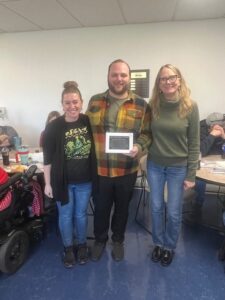
Donaven exemplifies an extraordinary commitment to community services and compassionate leadership. He consistently goes above and beyond, actively engaging in fundraising and team-building events while maintaining a positive attitude that uplifts his colleagues. Donaven’s dedication to helping others is evident in his willingness to take the time to explain situations and processes to his colleagues one on one and helps them navigate various challenges. He brings a sense of belonging and equal respect for everyone. He has not only excelled in his career but actively contributes to the growth of his colleagues by sharing valuable insights and providing training, support, and guidance. Donaven’s involvement in his training, external societies, as well as the various programs he’s developed and revamped, reflects his commitment to personal, professional, and team-oriented growth and development. He remains focused on positive outcomes, working tirelessly to revitalize and contribute to internal and external outreach initiatives. Donaven’s forward-thinking approach, consistent focus on teamwork, ad dedication to the visually impaired community make him an inspiring individual and deserving recipient of this award.


